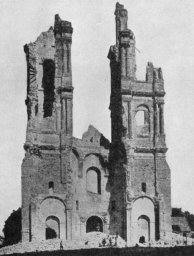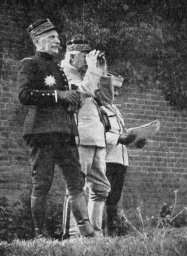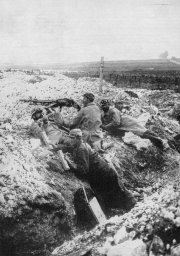
WWII: Maginot Line | Normandy | V-Weapon Sites | Arnhem
Further afield: Crete
| Home Tracing Military Ancestors Travel Advice CWGC Cemeteries Iron Harvest News Book Reviews Glossary Links Contact Me Artois:
 
|
The Third Battle of Artois and the British Loos Offensive (September 1915)It seems incredible after the enormous sacrifices of Second Artois, that within just a few months, the French were planning another great push to take Vimy Ridge. This time the operation was designed to support another French assault in the Champagne region which itself aimed to relieve pressure on the Russians, who had recently suffered a number of reverses at the hands of the German and Austro-Hungarian armies in the east. Joffre, the French Commander-in-Chief, also hoped that the attacks in the west would be of such intensity as to crack the German front and “possibly end the war”. As at Second Artois, the British would support the main French thrust, this time by attacking at Loos, to the north-west of Lens in the hope of sucking in German reserves to their front. Another heavy artillery bombardment, this time lasting for five days, preceded the French attack on 25th September 1915. However, the Germans were prepared and there was to be no repeat of the miraculous gains of 9th May. German artillery fire was intense and took a heavy toll on the French assault forces as they formed up. Combined with the French artillery plan, the thousands of shells turned the battle zone into a muddy morass. This dramatically slowed progress and Fayolle’s XXXIII Corps captured what was left of the village of Souchez only after two days of desperate fighting. Between 27th and 28th September the French threw themselves forward with great bravery up towards the crest of Vimy Ridge, first capturing Hill 119 to the east of Souchez and were within yards of reaching Hill 145 – the highest point before furious German counter-attacks halted further advances and eventually turned back the French tide. It was another bitter disappointment for the French Army who suffered another 48,000 casualties in a fruitless operation, which ultimately did nothing to relieve the pressure on the Russian front. To the north, at Loos, the British launched their largest offensive of the war to date with six divisions assaulting the German line between La Bassée and Loos town. Despite the concerns of both Sir John French, Commander-in-Chief of the British Expeditionary Force (BEF), and General Haig, commander of First Army, about deficiencies in British artillery and the openness of the ground to be attacked, the offensive got off to a good start. Gas, being used for the first time by the British, helped the leading divisions in the south overcome the German defences and, by nightfall, some British units had advanced three kilometres and captured Loos town. Only in the north was the advance slowed, as the wind turned and the gas blew back onto the unfortunate attacking forces. The way was now open for the reserve divisions to drive through the weakened German defences. Unfortunately, however, the Reserve Corps consisting of the 21st, 24th and Guards Divisions was many miles from the front when the attack commenced at 0630 and only arrived towards nightfall when German defences had stiffened and the opportunity of a breakthrough had disappeared. As it was these tired and, in the case of 21st and 24th Divisions, inexperienced troops, were thrown into the battle piecemeal and late. The advance lost its momentum and the fighting broke down into another attritional slugfest, which lasted into the second week of October. For just a couple of weeks fighting in a fairly small area, the casualties at Loos were terrible claiming 43,000 British and 20,000 Germans. The political fallout of this costly failure was significant – Sir John French was blamed for holding the reserves too far back at the crucial time and was sacked, being replaced as Commander in Chief of the BEF by Sir Douglas Haig. |


